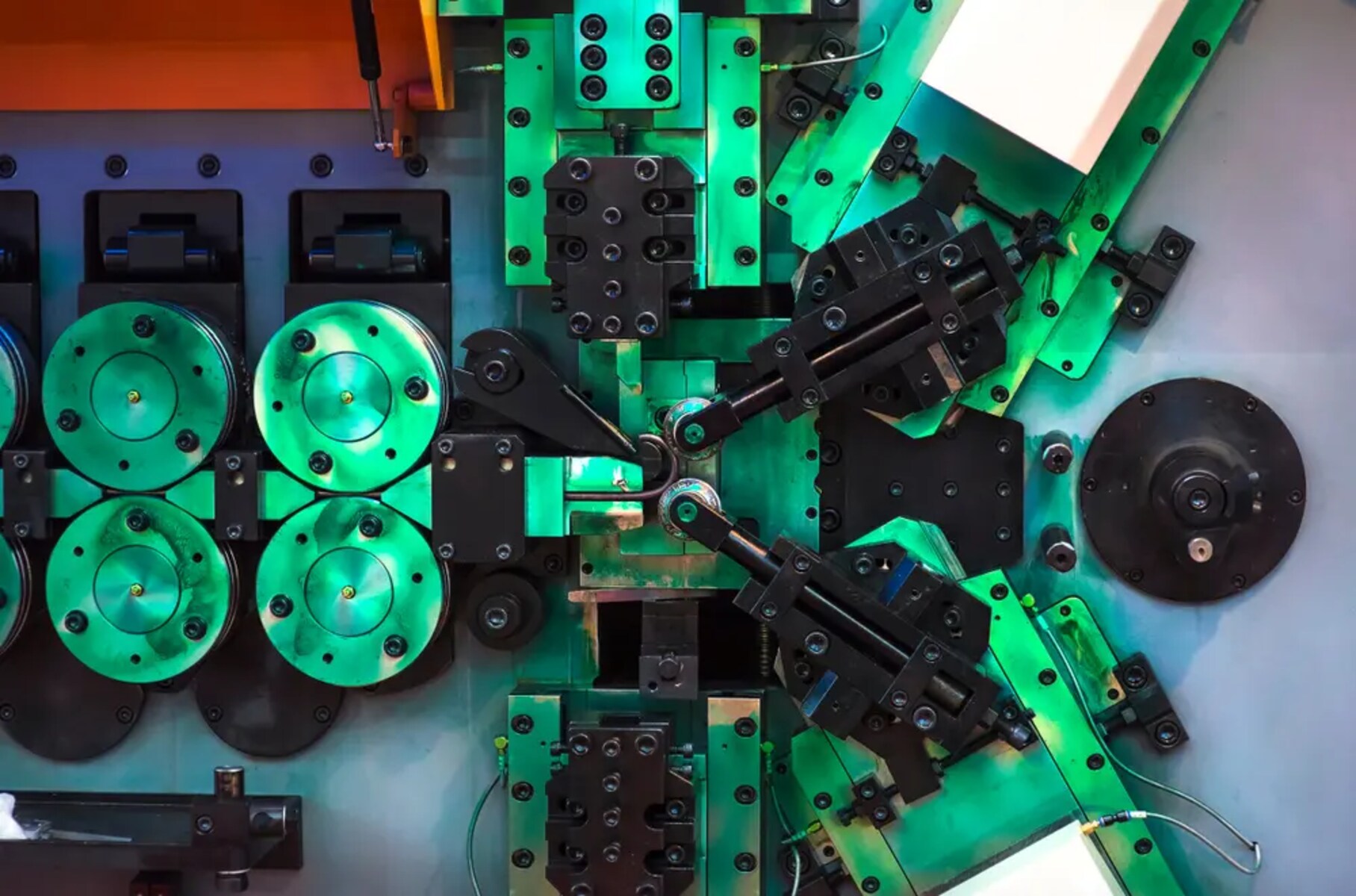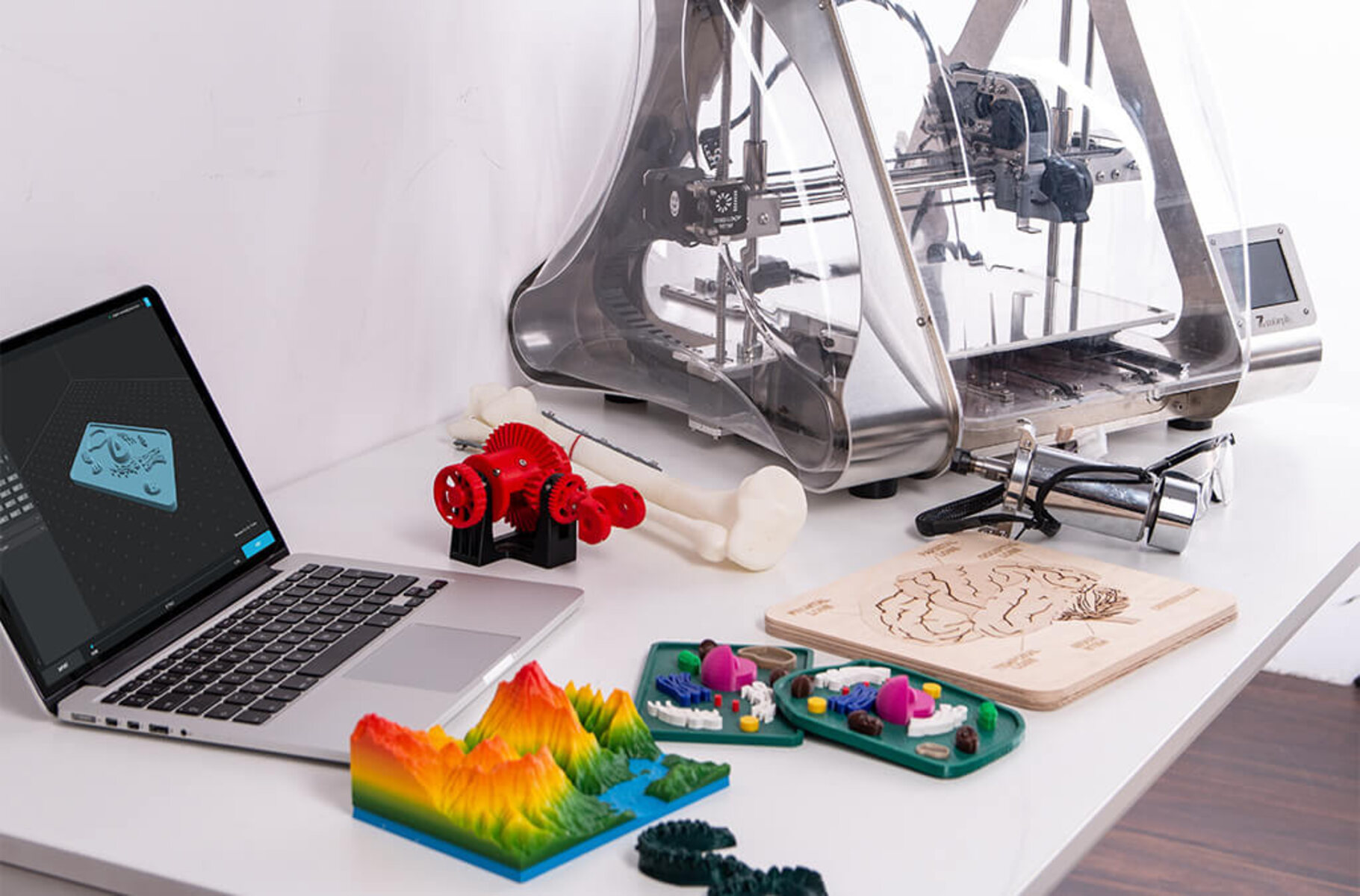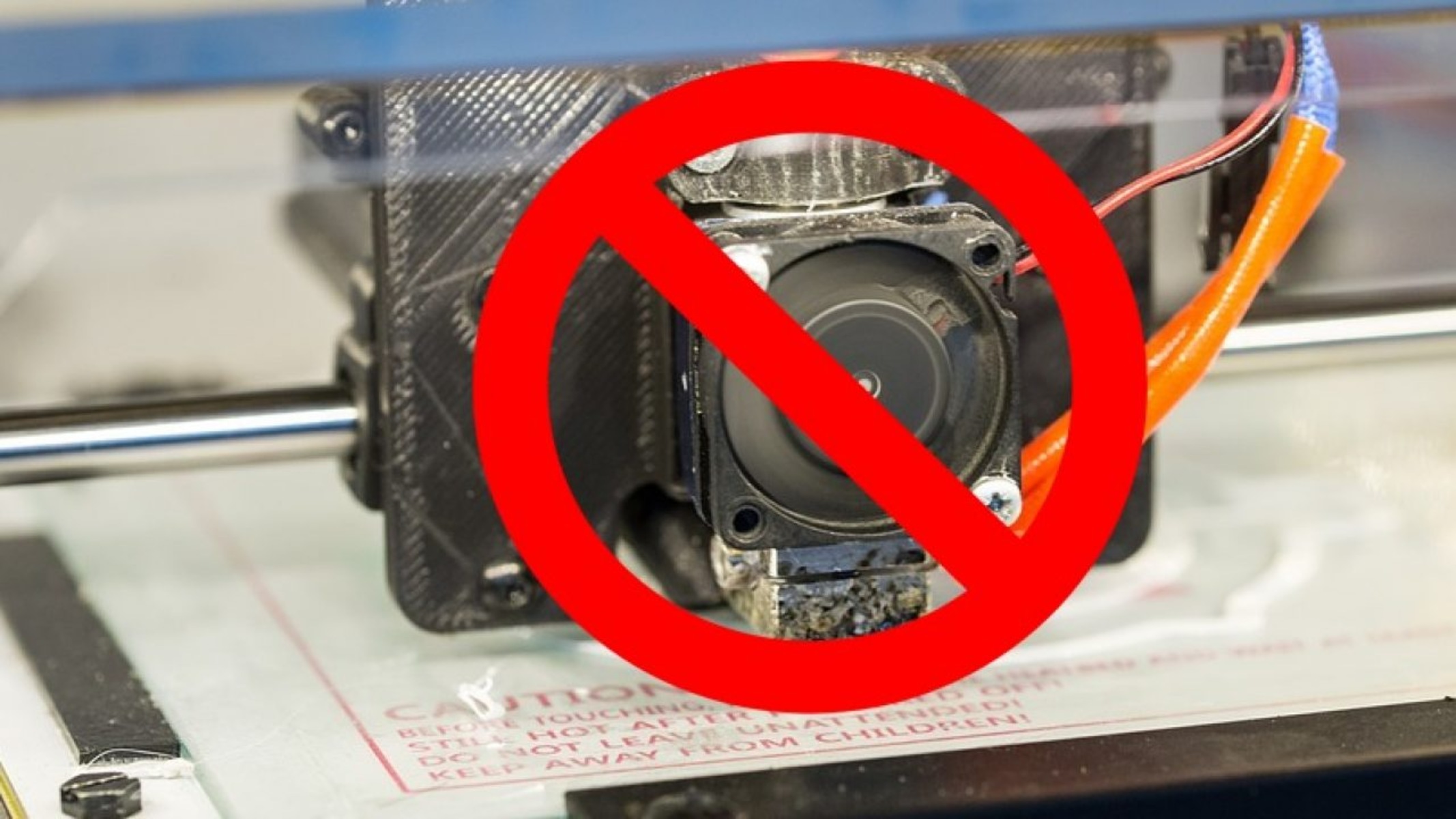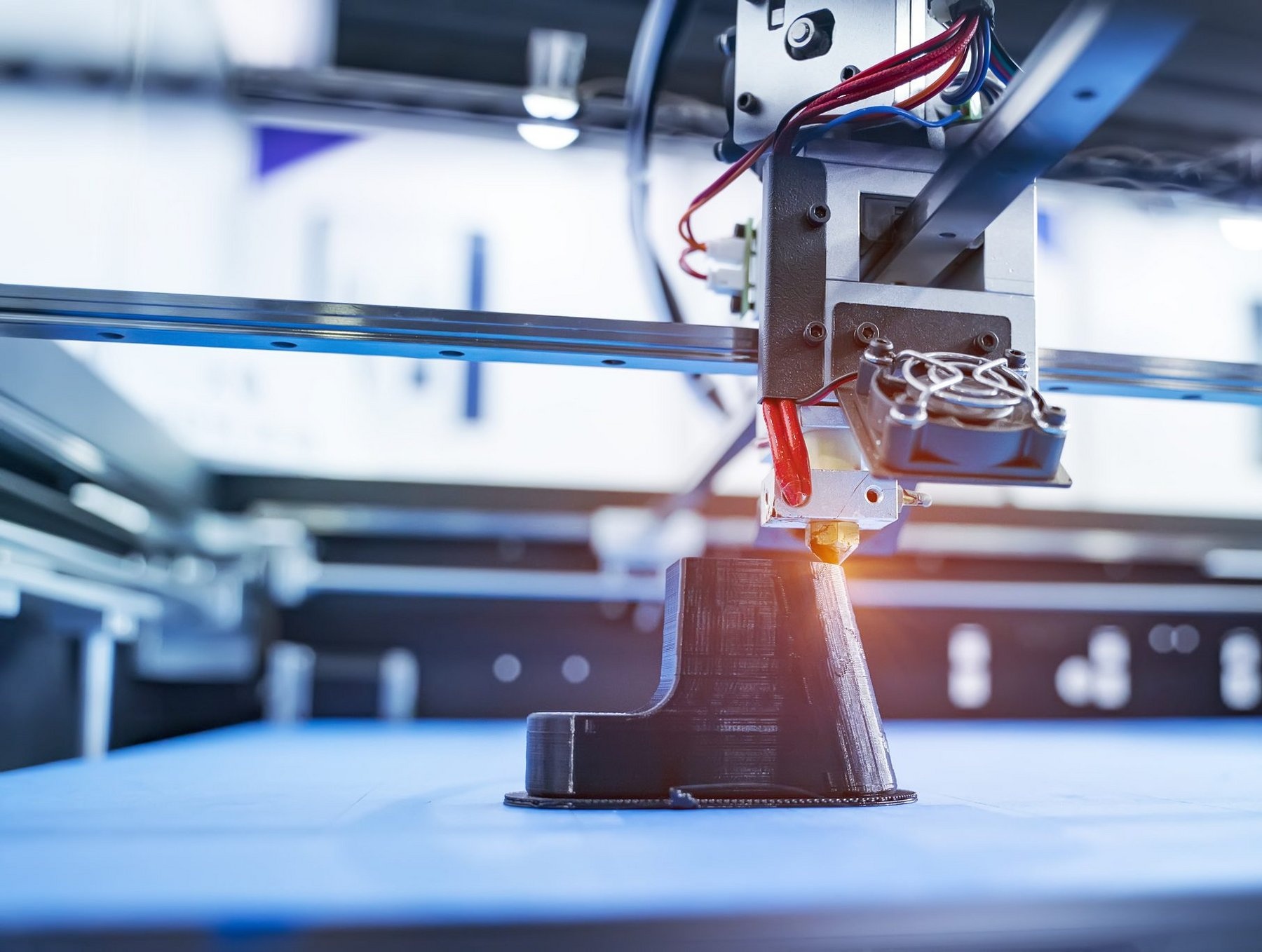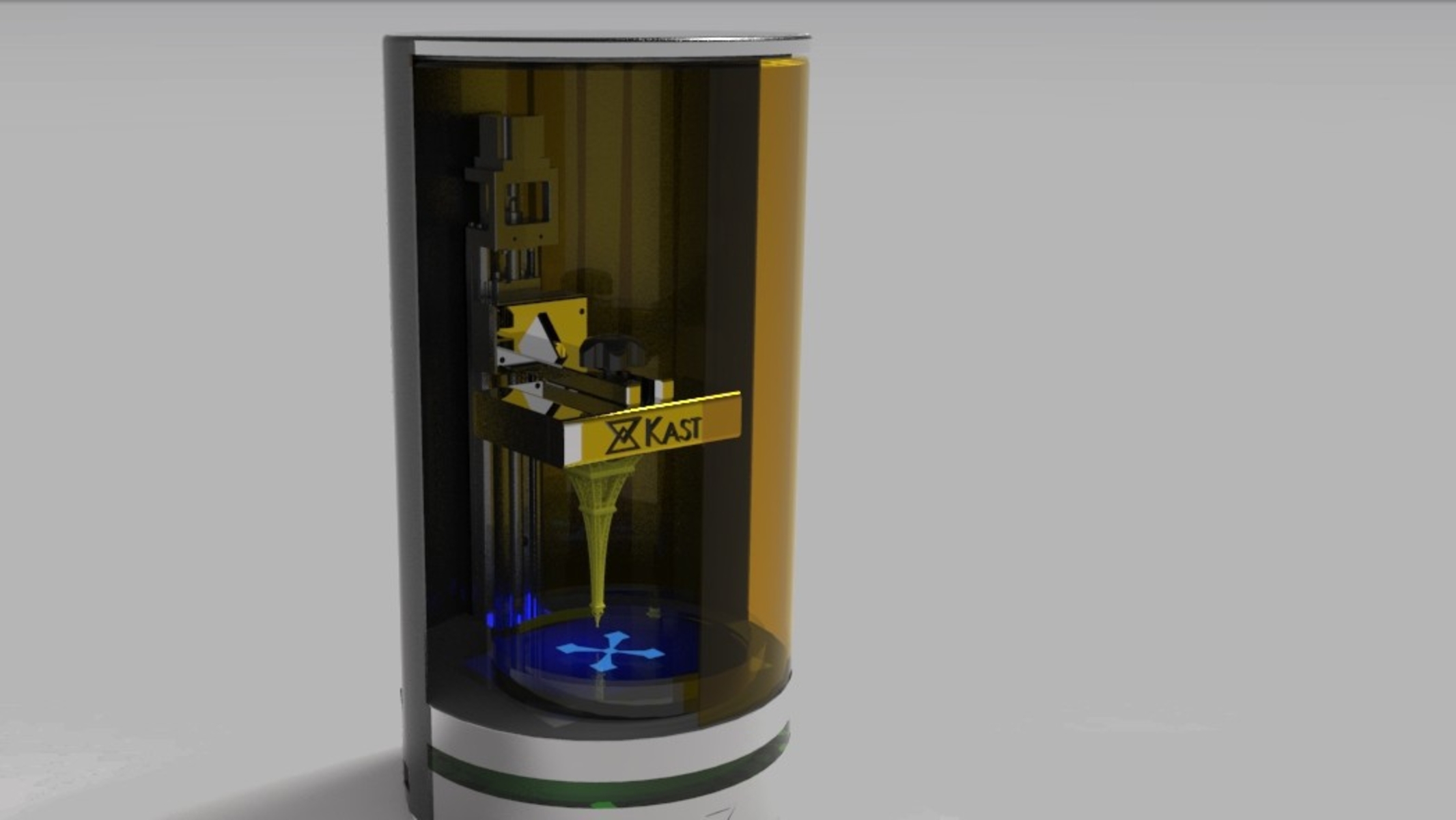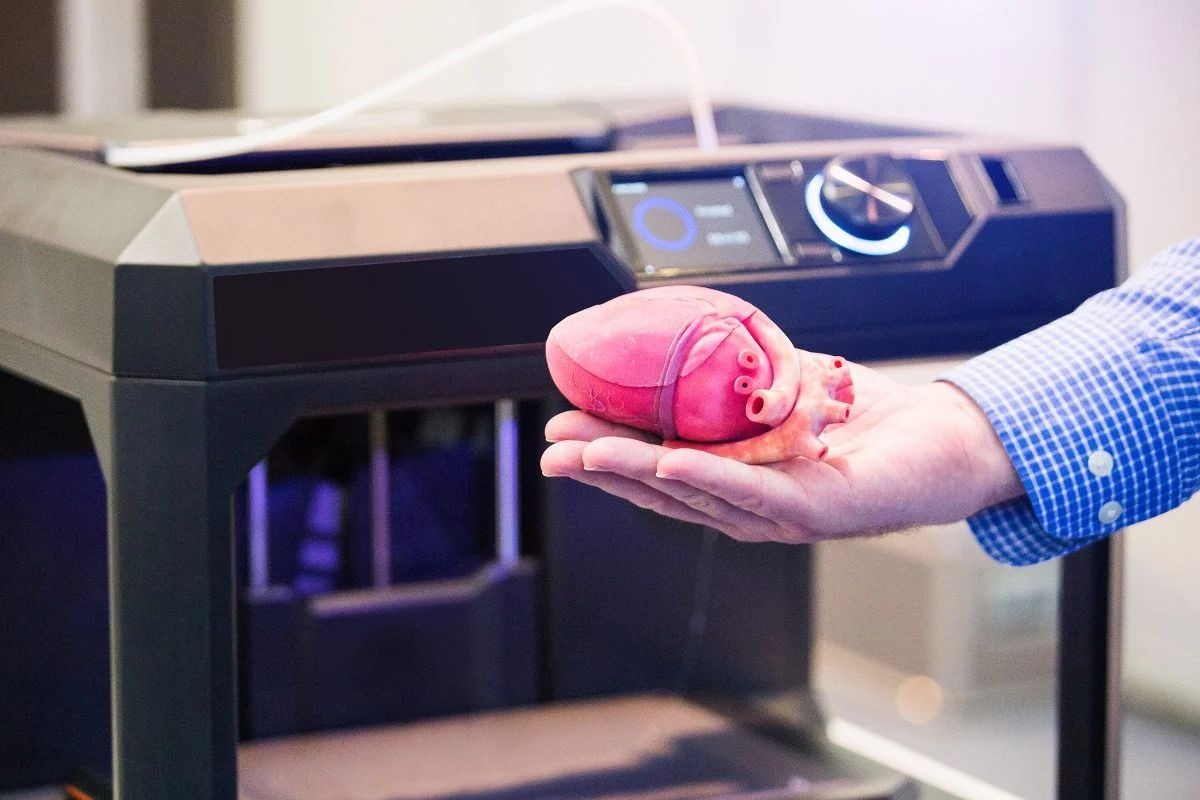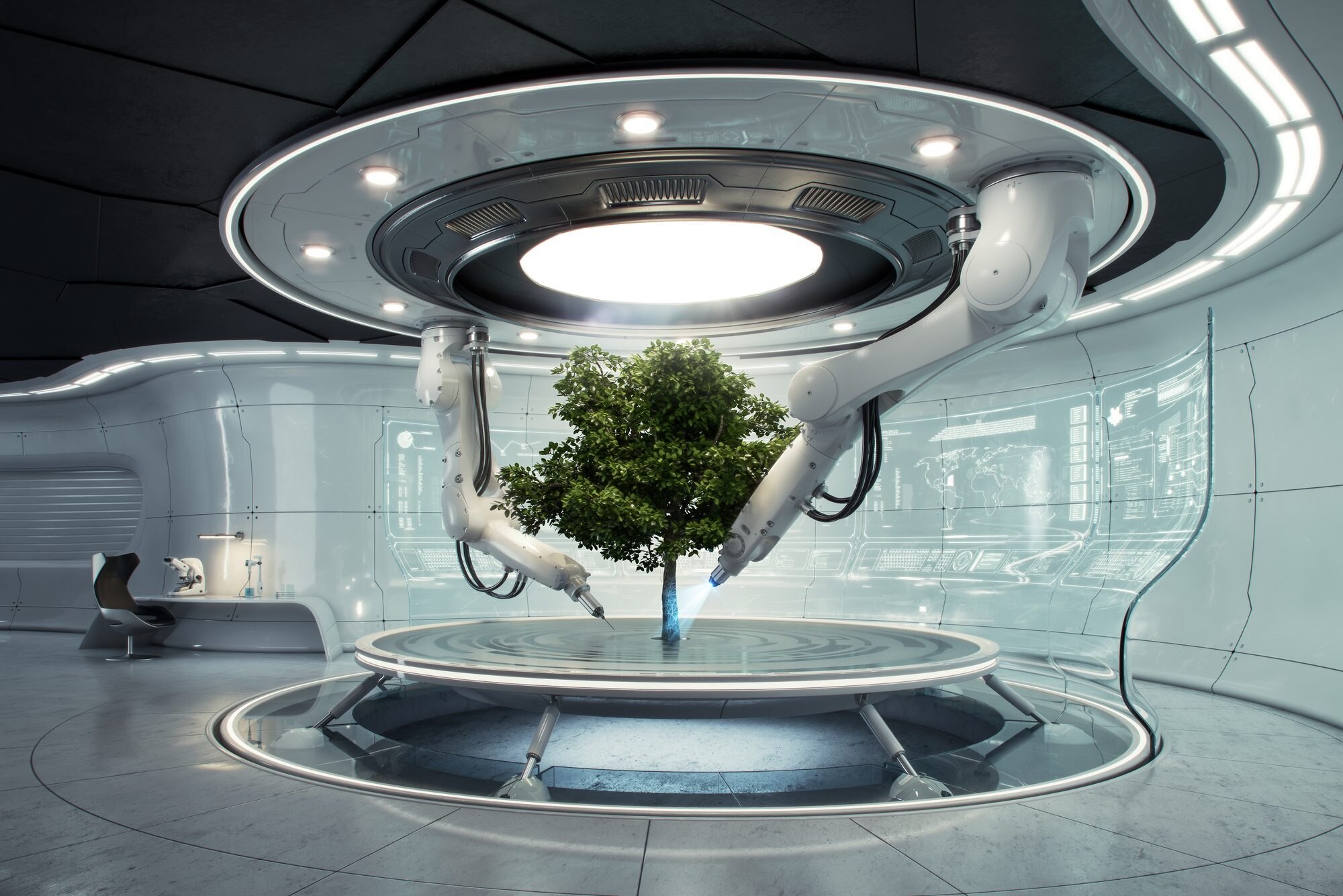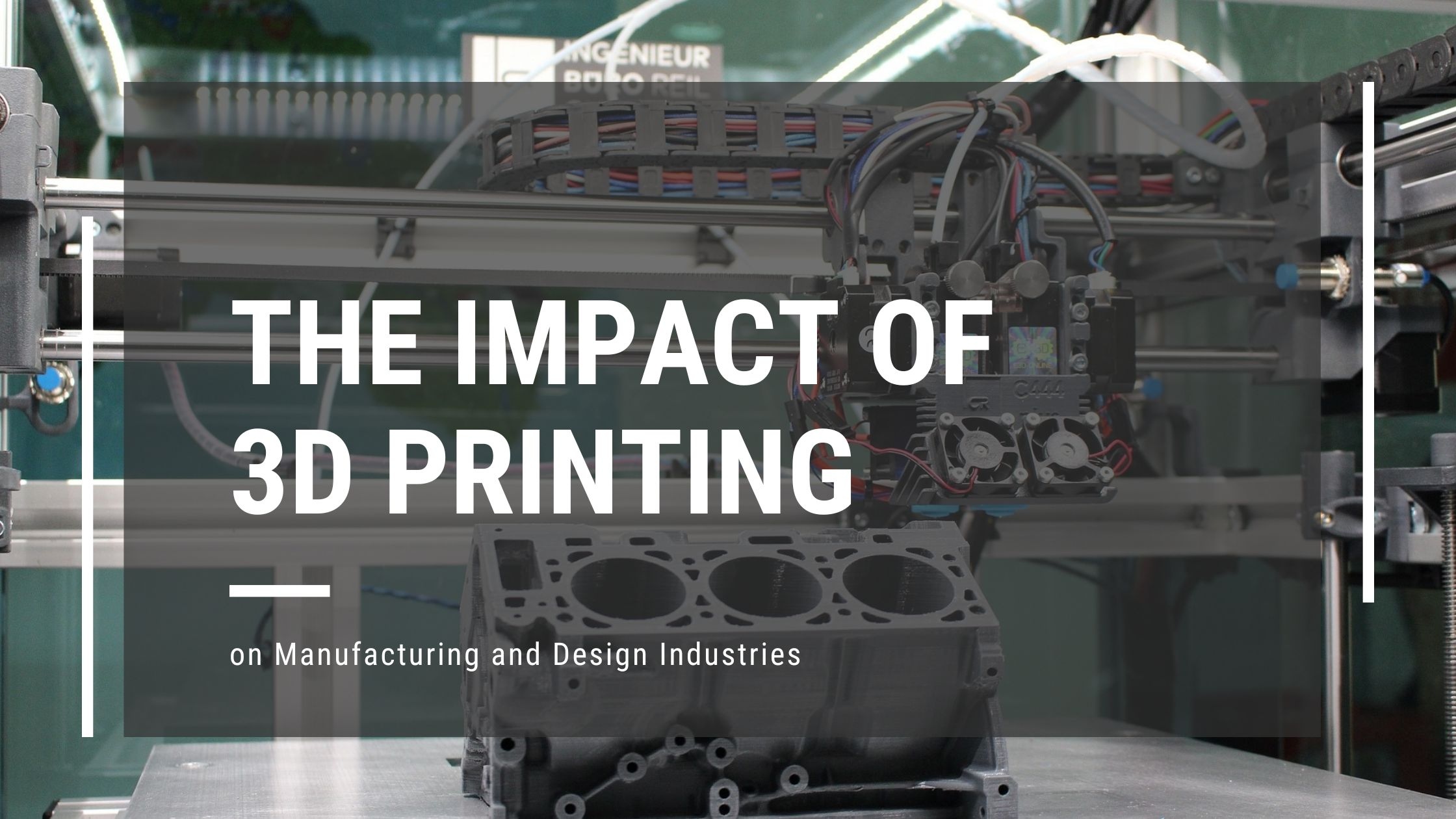Increased Design Freedom
One of the remarkable benefits of 3D printing over traditional manufacturing methods is the unprecedented level of design freedom it offers. Unlike traditional manufacturing, which often requires molds, tools, and assembly processes, 3D printing allows for complex and intricate designs to be created with ease.
With 3D printing, designers and engineers have the ability to create shapes and structures that were once considered impossible or prohibitively expensive. The layer-by-layer additive manufacturing process enables the production of intricate geometries, internal cavities, and hollow parts that were previously unachievable with conventional manufacturing techniques.
Moreover, 3D printing empowers designers to explore innovative and unconventional design concepts. Traditional manufacturing methods often impose limitations on design due to the constraints of the production process. In contrast, 3D printing allows for the realization of designs that are unique, unconventional, and tailored to specific requirements.
This increased design freedom is particularly beneficial in industries such as aerospace, automotive, and healthcare. In aerospace, for instance, 3D printing enables the creation of lightweight, high-strength components with intricate internal structures, reducing overall weight and fuel consumption. In the automotive sector, it allows for the production of customized parts and prototypes, enhancing vehicle performance and functionality. Additionally, in healthcare, 3D printing facilitates the creation of patient-specific implants and medical devices, improving treatment outcomes and patient satisfaction.
Furthermore, 3D printing eliminates the need for costly and time-consuming tooling processes associated with traditional manufacturing. Rather than investing in molds, dies, and tools for each design variation, 3D printing allows for on-demand production directly from a digital file. This not only accelerates the manufacturing process but also reduces costs significantly.
In summary, 3D printing offers unparalleled design freedom, enabling the creation of complex, customized, and innovative designs that were once limited by conventional manufacturing methods. The ability to explore new design possibilities allows industries to achieve improved product performance, reduced costs, and enhanced functionality. With 3D printing, the only limit is the designer’s imagination.
Cost-Effectiveness and Savings
Another significant benefit of 3D printing over traditional manufacturing is its cost-effectiveness and potential for savings. Unlike traditional methods that often involve high setup costs, material waste, and labor-intensive processes, 3D printing offers a more efficient and cost-saving approach to production.
One of the key cost-saving advantages of 3D printing is the reduction in material waste. Traditional manufacturing methods often generate a significant amount of waste due to the need for cutting, shaping, and forming materials. In contrast, 3D printing utilizes an additive manufacturing process where materials are added layer by layer, resulting in minimal material waste. This not only saves costs but also contributes to a more sustainable and environmentally friendly manufacturing process.
Furthermore, 3D printing eliminates the need for complex tooling and assembly processes, which can be both time-consuming and expensive. With traditional manufacturing, the production of custom parts or small batch sizes often requires the creation of specialized molds, jigs, or fixtures. These tools can be costly to design, develop, and maintain. In contrast, 3D printing allows for direct fabrication from digital designs, eliminating the need for costly tooling processes.
Moreover, 3D printing enables on-demand production, reducing the need for inventory storage and management. Traditional manufacturing often requires large quantities of products to be produced to justify the cost of tooling and setup. This can result in excessive inventory levels and potential wastage if demand fluctuates. With 3D printing, products can be produced as needed, reducing inventory costs and the risk of obsolete inventory.
Additionally, 3D printing offers the flexibility to consolidate multiple parts into a single printed object, saving assembly costs and streamlining production. This consolidation of parts simplifies the supply chain, reduces the number of components required, and lowers production and inventory costs.
It’s worth mentioning that while 3D printing may have higher upfront costs for machinery and materials compared to traditional methods, the long-term cost savings outweigh the initial investment. As the technology continues to advance and become more accessible, the cost per printed part continues to decrease, making 3D printing an increasingly cost-effective manufacturing option.
In summary, 3D printing offers significant cost savings through reduced material waste, elimination of complex tooling processes, on-demand production, and consolidation of parts. While there may be upfront costs associated with implementing and adopting 3D printing technology, the long-term cost benefits make it a cost-effective manufacturing solution.
Faster Production Time
One of the notable advantages of 3D printing over traditional manufacturing is its ability to significantly reduce production time. Traditional manufacturing methods often involve time-consuming processes such as machining, molding, and assembling, which can cause delays in product development and delivery. On the other hand, 3D printing offers a streamlined and efficient production process.
3D printing operates on an additive manufacturing principle, where objects are built layer by layer from a digital design. This eliminates the need for multiple complex assembly steps and reduces production time. With 3D printing, a design can be sent directly to the printer, and the production process can begin almost immediately.
Additionally, 3D printing enables rapid prototyping, allowing for quick iteration and design refinement. Traditional manufacturing often requires the creation of molds, tools, or fixtures, which can take weeks or even months to develop. With 3D printing, designers can produce prototypes in a matter of hours or days. This rapid prototyping capability accelerates the product development cycle and enables faster market entry.
Furthermore, 3D printing eliminates the need for time-consuming tooling processes associated with traditional manufacturing. Specialized molds, jigs, and fixtures are not required, significantly reducing setup time. This allows for quick production of custom or low-volume parts without the need for lengthy preparation.
The speed of 3D printing can be particularly advantageous in industries that require quick response times, such as healthcare and automotive. In healthcare, for example, 3D printing can be utilized for the rapid production of patient-specific medical devices and prosthetics. This enables healthcare providers to deliver personalized treatment options in a timely manner. In the automotive industry, 3D printing can be used for the rapid development and production of customized parts, reducing downtime for vehicle repairs and maintenance.
It’s important to note that while 3D printing offers faster production times, the exact speed can vary depending on factors such as the complexity of the design, the size of the object, and the type of printer and materials used. However, compared to traditional manufacturing methods, 3D printing generally provides a more efficient and expedited production process.
In summary, 3D printing offers faster production times compared to traditional manufacturing methods. The streamlined additive manufacturing process and rapid prototyping capabilities enable quick iteration, reduced setup time, and accelerated product development. Speedy production times are particularly valuable in industries that require quick response, customization, and rapid innovation.
Customization and Personalization
One of the most significant advantages of 3D printing over traditional manufacturing methods is its ability to offer a high level of customization and personalization. Traditional manufacturing often involves mass production of standardized products, limiting the ability to cater to individual needs. 3D printing, on the other hand, allows for the creation of highly customized and personalized designs.
With 3D printing, it becomes possible to produce unique and one-of-a-kind items tailored to specific requirements. Designers and engineers can easily modify digital designs to accommodate individual preferences, ensuring a personalized end product. This level of customization opens up a myriad of possibilities across various industries, ranging from consumer products to medical devices to architectural models.
In the consumer market, 3D printing enables the production of customized products, such as personalized jewelry, phone cases, and home decor. Consumers can have their names, initials, or specific designs incorporated into the products, resulting in a truly personalized and unique item. This customization allows individuals to express their personality and style, creating products that truly resonate with them.
Moreover, 3D printing has revolutionized the healthcare industry by enabling patient-specific customization of medical devices, implants, and prosthetics. By utilizing medical imaging and 3D modeling, patients can receive customized solutions that perfectly fit their anatomy and provide optimal support and comfort. This level of customization leads to improved treatment outcomes, enhanced patient experience, and faster recovery.
Another area where 3D printing excels in customization is in the field of architecture and design. Architects and designers can use 3D printers to create intricate and customized models of buildings and structures. This allows for a deeper exploration of design options and facilitates better communication with clients by providing tangible representations of their vision.
In essence, 3D printing offers unprecedented freedom to tailor and personalize designs. Whether it’s a unique consumer product, a medical device, or an architectural model, 3D printing allows for the realization of personalized creations that were once unattainable with traditional manufacturing methods.
It’s important to note that while 3D printing offers extensive customization capabilities, there may be certain limitations based on the materials, technology, and printing process used. However, advancements in 3D printing technology continue to push the boundaries of customization, making it an increasingly powerful tool for creating personalized products.
In summary, 3D printing enables a high level of customization and personalization, allowing for the creation of unique, tailored, and one-of-a-kind products. From personalized consumer goods to patient-specific medical devices to customized architectural models, 3D printing empowers individuals and industries to bring their creative visions to life.
Reduced Waste and Environmental Impact
3D printing offers a significant advantage over traditional manufacturing methods when it comes to reducing waste and minimizing environmental impact. Traditional manufacturing often generates excessive material waste, utilizes energy-intensive processes, and contributes to pollution. With 3D printing, these environmental concerns are addressed through more sustainable practices.
One of the primary ways that 3D printing reduces waste is through its additive manufacturing process. Traditional manufacturing methods, such as subtractive machining or molding, often involve cutting or shaping materials from larger blocks, resulting in significant material waste. In contrast, 3D printing builds objects layer by layer, using only the amount of material required to create the desired shape. This additive process minimizes waste, leading to more efficient use of materials.
In addition to reducing material waste, 3D printing also enables the utilization of more sustainable materials. Many 3D printing technologies allow for the use of recycled or biodegradable materials, reducing reliance on non-renewable resources. This promotes a circular economy by transforming waste materials into usable feedstock, minimizing the need for virgin materials.
Furthermore, 3D printing can contribute to energy savings compared to traditional manufacturing methods. In traditional manufacturing, producing complex objects often involves multiple machining operations and assembly processes, which require significant energy consumption. Conversely, 3D printing eliminates the need for many of these energy-intensive steps by directly building the complete object, resulting in reduced energy usage.
The eco-friendly nature of 3D printing is also apparent in its potential to localize production. With traditional manufacturing, products are often produced in centralized factories and then transported to various locations, resulting in increased carbon emissions from transportation. 3D printing decentralizes production by enabling products to be manufactured on-site or closer to the point of use. This localized production reduces transportation distances, decreases fuel consumption, and contributes to a smaller carbon footprint.
Moreover, 3D printing facilitates more sustainable supply chains by reducing the need for inventory storage. Traditional manufacturing often requires large quantities of products to be produced and stored in warehouses, leading to excessive inventory levels and potential wastage. With 3D printing, products can be produced on-demand, minimizing the need for inventory and reducing the risk of obsolete stock.
In summary, 3D printing offers a more sustainable and environmentally friendly alternative to traditional manufacturing methods. It minimizes material waste, promotes the use of sustainable materials, saves energy, localizes production, and streamlines supply chains. By adopting 3D printing, industries can reduce their environmental impact and contribute to a greener future.
Improved Functionality and Performance
3D printing provides numerous advantages when it comes to improving functionality and performance compared to traditional manufacturing methods. The ability to create complex geometries, optimize designs, and use innovative materials makes 3D printing a game-changer in driving product innovation and enhancing overall performance.
One of the key benefits of 3D printing is the ability to produce intricate and complex geometries that are difficult or impossible to achieve with traditional manufacturing. The layer-by-layer additive manufacturing process allows for the creation of internal cavities, honeycomb structures, and intricate lattice designs. These complex geometries can enhance the strength, durability, and lightweight nature of a product, resulting in improved functionality.
In addition, 3D printing enables the optimization of designs by allowing for the production of lightweight and high-strength components. Traditional manufacturing methods often involve subtractive processes, which remove material and can potentially weaken the structure. With 3D printing, materials are added layer by layer only where needed, resulting in efficient use of materials and optimal weight reduction without compromising structural integrity.
Furthermore, 3D printing offers the opportunity to use innovative and advanced materials that can enhance a product’s functionality and performance. From strong and lightweight thermoplastics to high-strength metals, 3D printing opens up a wide range of material possibilities. Industries such as aerospace, automotive, and medical can benefit from the ability to create parts with specific material properties, such as heat resistance, biocompatibility, or conductivity.
3D printing also allows for the integration of multiple components into a single printed object, eliminating the need for assembly and reducing the risk of component failure. By consolidating parts, the design becomes more streamlined, reducing the overall complexity and enhancing the reliability and performance of the product.
Moreover, 3D printing enables the production of custom products tailored to individual needs. By incorporating user requirements and preferences into the design process, products can be optimized for specific use cases, resulting in improved functionality and user experience.
Additionally, 3D printing facilitates rapid iteration and design refinement, leading to continuous improvement of functionality and performance. Design modifications can be easily implemented and tested, allowing for quicker identification and resolution of design flaws or performance limitations.
In summary, 3D printing offers improved functionality and performance through the creation of complex geometries, optimization of designs, usage of innovative materials, consolidation of components, and customization. By leveraging the advantages of 3D printing, industries can push the boundaries of innovation, enhance product performance, and deliver better solutions to meet customer needs.
Enhanced Complexity and Intricacy
One of the remarkable advantages that 3D printing offers over traditional manufacturing methods is the ability to create designs with enhanced complexity and intricacy. Traditional manufacturing often imposes limitations on the complexity and intricacy of designs due to the constraints of the production process. 3D printing, on the other hand, breaks these barriers and opens up a world of possibilities.
With 3D printing, designers and engineers can create intricate and complex geometries that were once considered impractical or impossible with traditional methods. The layer-by-layer additive manufacturing process allows for the formation of complex internal structures, intricate details, and fine texture, ensuring that every aspect of the design is accurately reproduced.
This enhanced complexity and intricacy can be particularly beneficial in industries such as aerospace, architecture, and art. In aerospace, for instance, 3D printing enables the creation of lightweight and optimized components with complex internal passages and lattice structures. This can lead to reduced weight, improved fuel efficiency, and enhanced performance of aircraft and spacecraft.
In architecture, 3D printing allows for the fabrication of intricate and visually stunning models, showcasing complex building designs and structural elements. This not only aids in the visualization of architectural concepts but also provides a deeper understanding of the construction feasibility and spatial interactions.
Furthermore, 3D printing has revolutionized the field of art by offering artists new avenues for creative expression. Artists can now explore complex geometries, unique textures, and intricate details that were once challenging to achieve with traditional sculpting methods. This enables the creation of one-of-a-kind, visually striking art pieces that captivate and inspire.
In addition to aesthetics, enhanced complexity and intricacy in 3D printing can also contribute to functional applications. For example, in the medical field, 3D printing allows for the production of patient-specific implants with complex internal structures that can encourage bone growth or facilitate drug delivery. These intricately designed implants can provide better treatment outcomes and improve patient well-being.
Moreover, 3D printing has a direct impact on product performance and functionality. The ability to incorporate intricate internal features can optimize airflow, fluid dynamics, or heat dissipation within a product. This can lead to improved performance, efficiency, and durability of components across various industries.
It’s important to note that although complex and intricate designs can be achieved with 3D printing, the printing process may require additional time and resources compared to simpler designs. The complexity of the design, the size of the object, and the printing technology used can affect the overall production time.
In summary, 3D printing offers the opportunity to create designs with enhanced complexity and intricacy. This opens up new possibilities in aerospace, architecture, art, and various other industries by pushing the boundaries of design and functionality. Through 3D printing, intricate and visually stunning creations can be brought to life, enabling innovation, creativity, and improved performance.
Accessibility and Democratization of Manufacturing
One of the transformative aspects of 3D printing is its ability to democratize manufacturing and make it more accessible to individuals and smaller businesses. Traditional manufacturing methods often require significant financial resources, specialized machinery, and expertise, making it challenging for small-scale or individual entrepreneurs to enter the market. 3D printing, however, provides a more accessible pathway to manufacturing.
One of the key advantages of 3D printing is its relatively low entry barrier in terms of cost and infrastructure. While traditional manufacturing often requires hefty investments in machinery, tools, and factory space, 3D printing can be achieved with a desktop-sized printer and a computer. This accessibility allows individuals and small businesses to start their own production without the need for significant capital investment.
Furthermore, 3D printing eliminates the need for intricate manufacturing processes and specialized skills. With traditional manufacturing, expertise in machining, casting, or molding is often required, which can be a barrier for those without specialized training. 3D printing technology, on the other hand, simplifies the production process by directly translating digital designs into physical objects. This reduces the dependency on specialized knowledge and allows for more people to engage in manufacturing.
3D printing also fosters innovation and entrepreneurship by enabling rapid prototyping and iteration. With traditional manufacturing, the cost and time associated with creating prototypes can be prohibitive, limiting the ability to refine designs and explore new ideas. 3D printing allows for quick and cost-effective production of prototypes, facilitating continuous improvement and innovation. This accessibility empowers entrepreneurs and inventors to bring their ideas to market faster and with greater confidence.
The accessibility of 3D printing extends beyond individuals and small businesses. It also has the potential to revolutionize manufacturing in developing countries and remote areas. By providing the means to produce products locally, 3D printing reduces dependence on large-scale global supply chains and can contribute to economic growth and regional self-sufficiency.
Moreover, 3D printing promotes inclusivity and customization. With the ability to easily modify digital designs, personalize products, and produce on-demand, 3D printing allows for the creation of products that cater to specific needs and preferences. This opens up opportunities for niche markets, specialized applications, and unique customer requirements that may not be feasible with traditional manufacturing.
However, it’s important to note that while 3D printing offers accessibility and democratization of manufacturing, there are still challenges to consider. Issues such as intellectual property protection, quality assurance, and regulatory compliance need to be addressed to ensure the responsible and ethical use of this technology.
In summary, 3D printing has the potential to transform manufacturing by making it more accessible and democratized. This technology lowers the entry barrier, fuels innovation and entrepreneurship, fosters local manufacturing, and enables customization. By unlocking the power of 3D printing, individuals, small businesses, and communities can participate in the manufacturing revolution and contribute to the diversification and expansion of the market.
Simplified Prototyping and Iteration Process
One of the significant advantages of 3D printing over traditional manufacturing methods is its ability to simplify the prototyping and iteration process. Traditional manufacturing often involves lengthy and costly processes to develop prototypes, iterate designs, and refine product concepts. 3D printing revolutionizes this aspect of product development by providing a faster and more cost-effective solution.
With 3D printing, prototyping becomes a streamlined and efficient process. Designers and engineers can quickly transform their digital designs into physical prototypes, allowing for a tangible representation of their ideas. Traditional prototyping methods, such as CNC machining or manual modeling, often require extensive tooling and setup, leading to longer lead times and higher costs.
3D printing eliminates the need for tooling and setup, as the prototypes are built layer by layer directly from the digital design. This enables designers to rapidly iterate and refine their concepts without the constraints of traditional manufacturing processes. Changes can be made to the digital design file, and a new prototype can be printed in a relatively short period.
This rapid prototyping capability has significant benefits across multiple industries. In product development, designers can quickly test and evaluate different design variations, allowing for faster identification of flaws or areas of improvement. This iterative process speeds up the concept-to-market timeline, reduces development costs, and enhances the overall product quality.
Additionally, 3D printing facilitates the validation and communication of design concepts. Prototypes created with 3D printing can be used to demonstrate functionality, form, and fit to clients, stakeholders, and potential customers. This enables better feedback, more effective collaborations, and quicker decision-making, ensuring that the final product meets user requirements and expectations.
Moreover, the simplified prototyping and iteration process offered by 3D printing fosters innovation and encourages experimentation. Designers and engineers can explore unconventional design concepts, test novel ideas, and push the boundaries of what is possible. This creative freedom leads to breakthroughs in product design, resulting in innovative, unique, and market-differentiating solutions.
It’s important to note that while 3D printing simplifies the prototyping and iteration process, there may still be limitations based on the material properties, printer capabilities, and the complexity of the design. The choice of 3D printing technology and materials should be carefully considered to ensure that they align with the specific requirements and objectives of the prototyping process.
In summary, 3D printing simplifies the prototyping and iteration process by providing a fast, cost-effective, and flexible solution. It enables rapid design validation, facilitates effective communication, promotes innovation, and shortens the time from concept to market. With 3D printing, designers and engineers can efficiently iterate and refine their designs, leading to improved products and increased success in the marketplace.
Endless Possibilities for Innovation and Creativity
3D printing unlocks a world of endless possibilities for innovation and creativity, offering unprecedented opportunities for designers, engineers, and entrepreneurs. Unlike traditional manufacturing methods that may impose limitations on design and production, 3D printing provides the freedom to explore new ideas, push boundaries, and revolutionize industries.
One of the key advantages of 3D printing is its ability to create complex geometries and intricate designs that were once considered impractical or unachievable. With the layer-by-layer additive manufacturing process, designers can incorporate intricate details, internal structures, and organic shapes into their creations. This opens up opportunities for new design aesthetics that were previously unimaginable.
Furthermore, 3D printing allows for the production of customized and personalized products, tailored to individual needs and preferences. Traditional manufacturing methods often focus on mass production and standardization, limiting the ability to cater to niche markets or specific customer demands. 3D printing, however, enables the creation of unique, one-of-a-kind products that resonate with individual customers, fostering a deeper connection and enhancing customer satisfaction.
Additionally, 3D printing facilitates rapid prototyping and iteration, enabling designers and engineers to refine their designs and iterate quickly. This flexibility promotes a culture of experimentation and risk-taking, as designers can easily test ideas, make modifications, and explore various design alternatives with minimal time and cost. This iterative process is a catalyst for innovation, as it encourages continuous improvement and drives the development of cutting-edge solutions.
Moreover, with 3D printing, previously complex and time-consuming manufacturing processes can be simplified and streamlined. Designers can consolidate multiple components into a single, printed object, reducing assembly steps and minimizing the risk of component failure. This simplification not only enhances efficiency but also opens up new possibilities for novel product designs that optimize functionality, durability, and material usage.
The versatility and material compatibility of 3D printing technology also foster innovation. From plastics and metals to ceramics and bio-compatible materials, a wide range of materials can be used in 3D printing, offering flexibility and expanding the range of applications. This spurs innovation in industries such as healthcare, aerospace, automotive, fashion, and consumer goods, as designers and engineers can experiment with new material combinations, leading to breakthroughs in product performance and functionality.
3D printing also facilitates collaboration and knowledge-sharing among innovators and creators. Online platforms and communities dedicated to 3D printing provide a space for designers, engineers, and enthusiasts to share ideas, discuss challenges, and showcase their creations. This collaborative environment fosters collective growth, inspires new projects, and nurtures a culture of innovation and creativity.
In summary, 3D printing opens up endless possibilities for innovation and creativity. The ability to create complex designs, customize products, simplify manufacturing processes, and use a wide range of materials drives the exploration of new ideas and approaches. 3D printing empowers designers, engineers, and entrepreneurs to break barriers, reimagine industries, and bring their visions to life.







